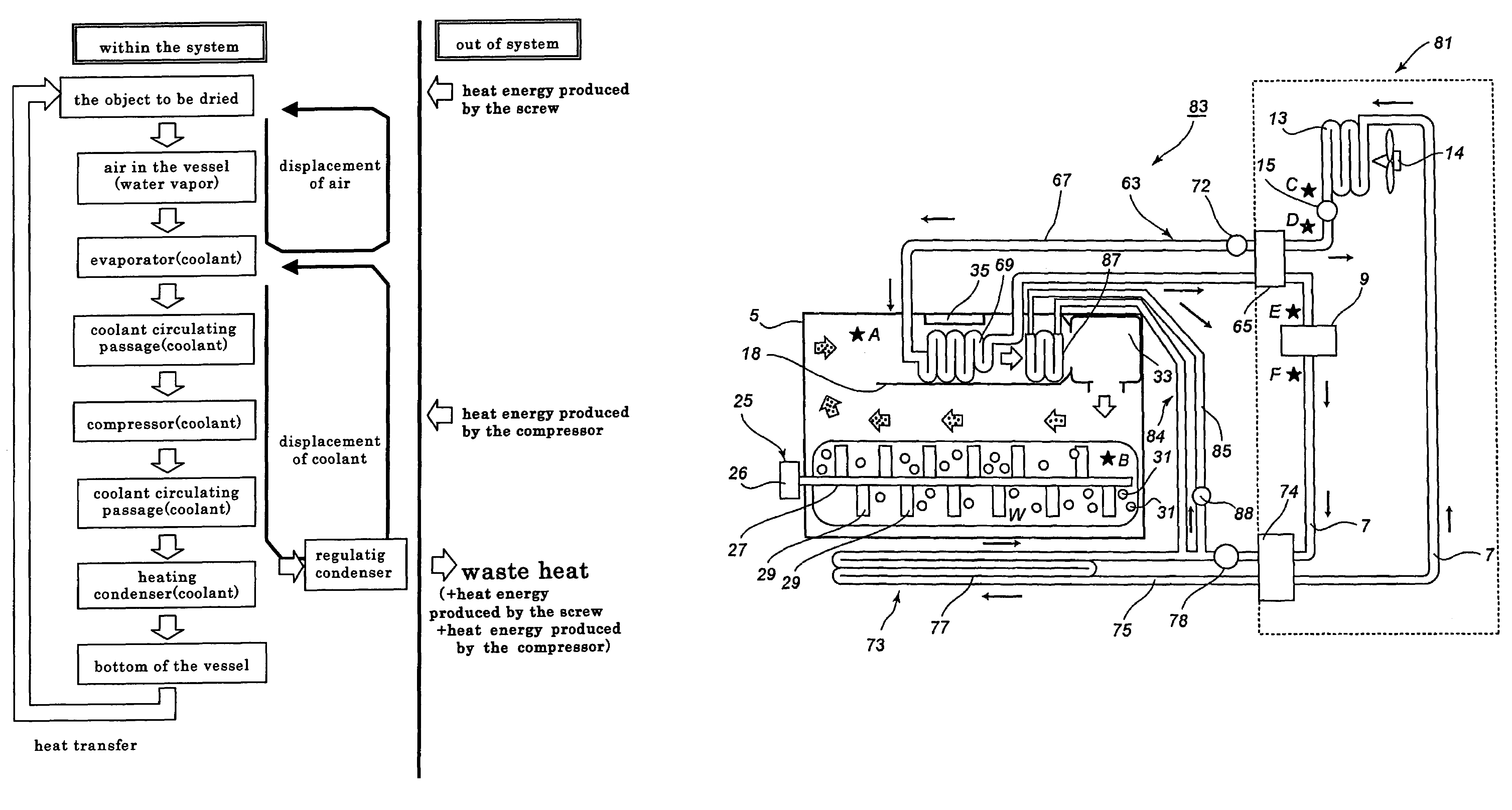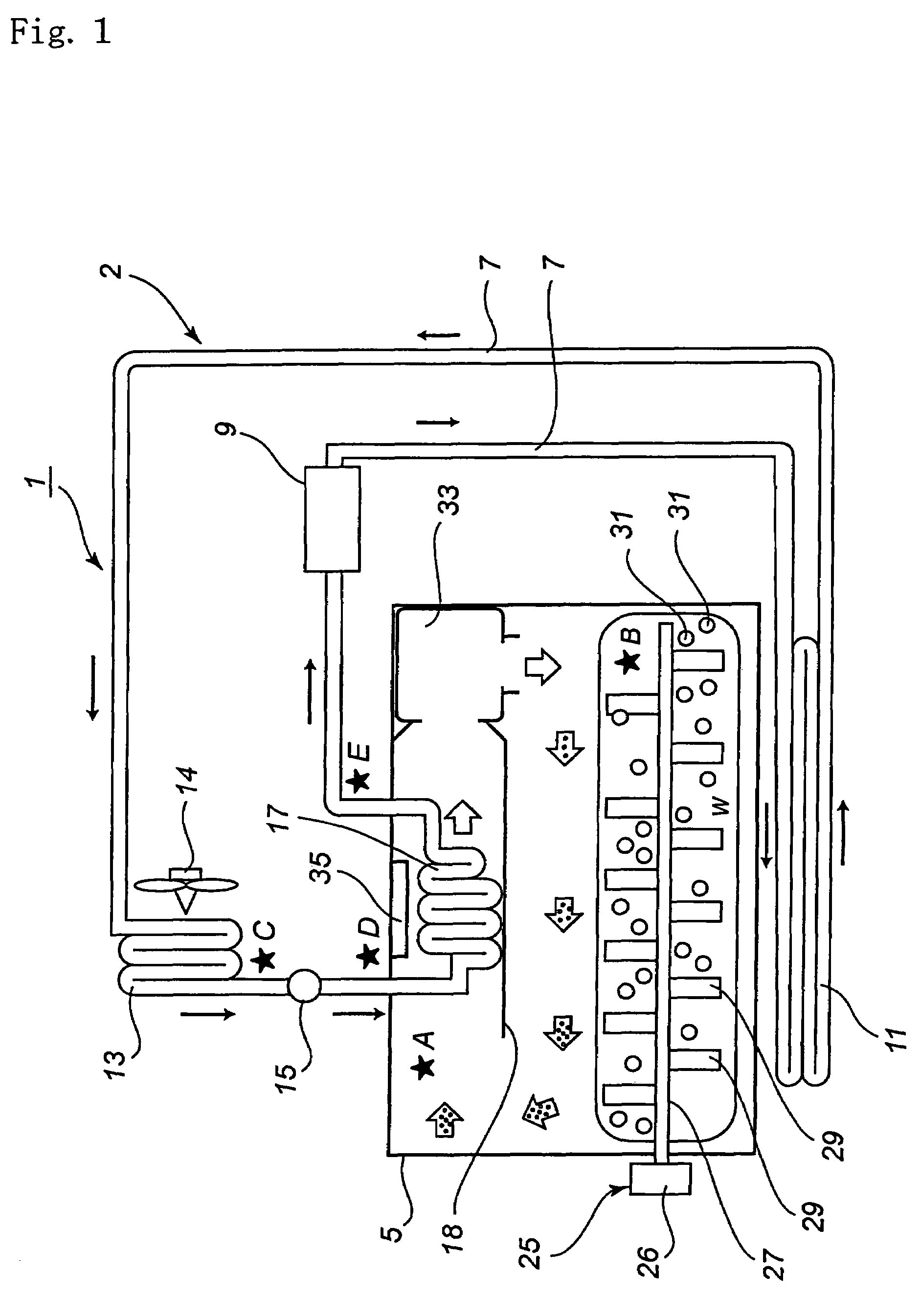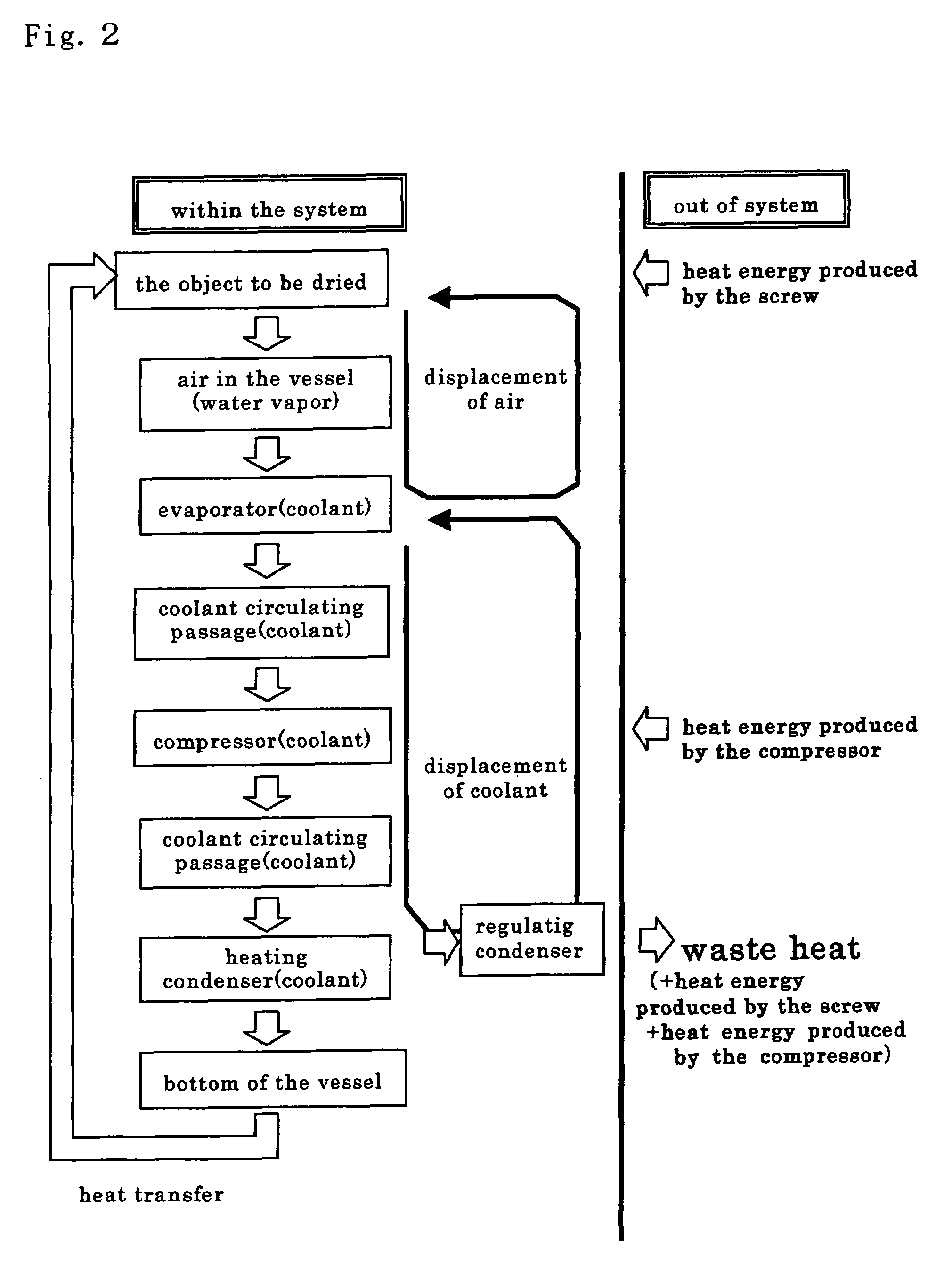Drying system
a drying system and drying technology, applied in the field of drying systems, can solve the problems of high energy consumption of heating-type drying equipment and hot-wind drying equipment, difficult to do such procedures industrially, and difficulty in achieving the effect of drying system operation efficiency, low water content, and improved quality
- Summary
- Abstract
- Description
- Claims
- Application Information
AI Technical Summary
Benefits of technology
Problems solved by technology
Method used
Image
Examples
first embodiment
[0047]the invention will now be described with reference to FIGS. 1-3.
[0048]FIG. 1 is a diagrammatic view illustrating the drying system in accordance with the first embodiment, FIG. 2 is a flow diagram illustrating the cycle of heat transfer, and FIG. 3 is a block diagram illustrating the system for controlling the drying system of the invention.
[0049]In this embodiment, an object (W) to be dried is tea leaves, which represent moist organic materials.
[0050]Essential components of the drying system 1 are compression refrigeration cycle section 2 and processing vessel 5. In this drying system 1, the cooling and heating operations are effected on direct modes, respectively.
[0051]At first, the arrangement and the operation of the compression refrigeration cycle section 2 are described in detail.
[0052]The section 2 is provided from the upstream side thereof with a compressor 9, a heating condenser 11, a regulating condenser 13, an expansion valve 15, and an evaporator 17 in this sequenc...
second embodiment
[0095]The drying system 41 in accordance with the second embodiment will now be described with reference to FIG. 4. This figure is a diagrammatic view generally illustrating the drying system 41. The structural components of the drying system 41 illustrated in FIG. 4 are designated by the same reference numeral as those used in FIG. 1, provided that those corresponding components are substantially identical with each other. In this connection, the description is omitted on the corresponding components.
[0096]The drying system 41 is provided with the first flow passage (coolant circulating passage 7) for delivering coolant from the compressor 9 to the heating condenser 11, and the second flow passage (by-pass passage) 43 in parallel with the first one for delivering coolant directly into the regulating condenser 13. The second flow passage is provided with a flow control valve 45. When it is almost unnecessary to increase the temperature of the object (W), the divergence of the flow c...
third embodiment
[0098]The drying system 51 of the third embodiment will now be described with reference to FIG. 5.
[0099]FIG. 5 is a diagrammatic view generally illustrating the drying system 51. The structural components of the drying system 51 illustrated in FIG. 5 are designated by the same reference numeral as those used in FIG. 1, provided that those corresponding components are substantially identical with each other. In this connection, the description is omitted on the corresponding components.
[0100]The principal aspect of the drying system 51 is a reheating section 52. The coolant of high temperature and high pressure flows from the compressor 9 through the flow passage 7 and into the heating condenser 11 to provide heat energy to the object (W) through liquefying the coolant. The reheating section 52 connected in series with the heating condenser 11 includes a reheating element 55 for heating air immediately after passing through the evaporator 17. The amount of heat energy to be supplied ...
PUM
 Login to View More
Login to View More Abstract
Description
Claims
Application Information
 Login to View More
Login to View More - R&D
- Intellectual Property
- Life Sciences
- Materials
- Tech Scout
- Unparalleled Data Quality
- Higher Quality Content
- 60% Fewer Hallucinations
Browse by: Latest US Patents, China's latest patents, Technical Efficacy Thesaurus, Application Domain, Technology Topic, Popular Technical Reports.
© 2025 PatSnap. All rights reserved.Legal|Privacy policy|Modern Slavery Act Transparency Statement|Sitemap|About US| Contact US: help@patsnap.com



